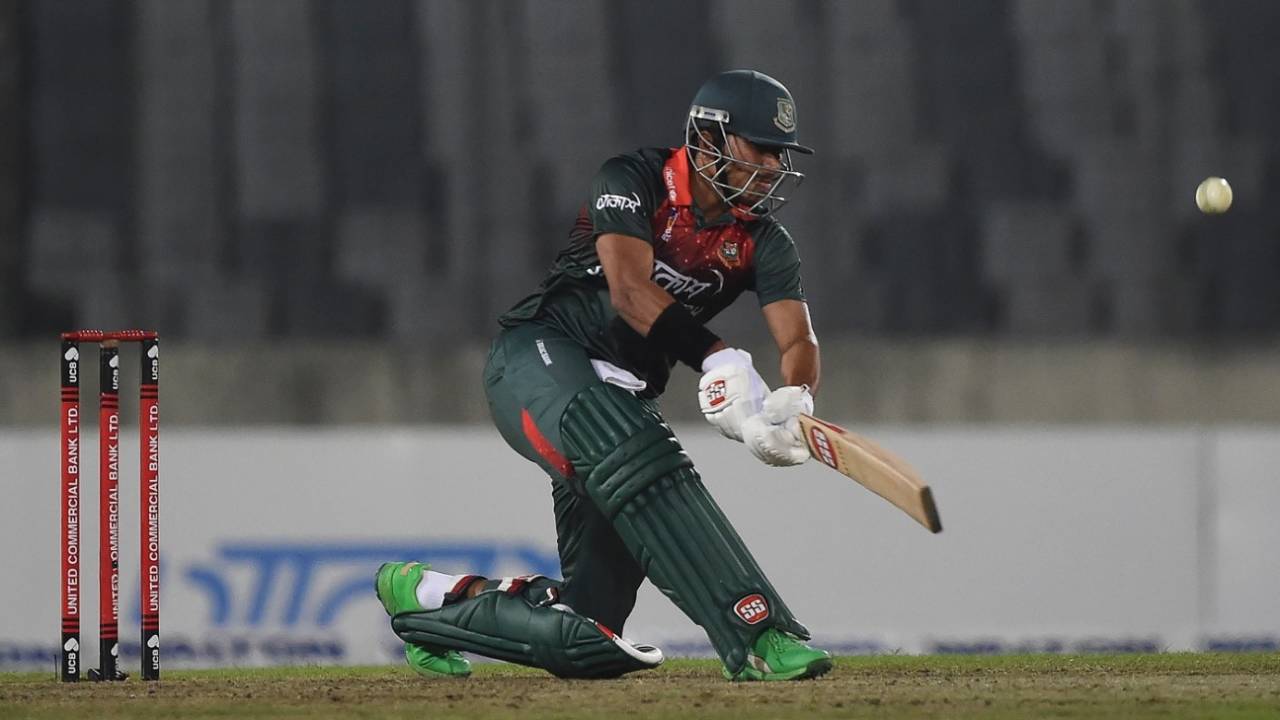Soumya Sarkar did the job at No 3 against Zimbabwe. He was asked to do a different one in Lahore couple of months ago. Bat at No. 6 and 7. He had two opportunities but he couldn't adapt to an unfamiliar role where he had to slog from the word go. Thrusting Sarkar into a new role looked like a desperate attempt by the team management to keep him in the squad, but it certainly wasn't the first time the decision-makers in the Bangladesh team insisted on having him around.
Even for this first T20I against Zimbabwe, conventional wisdom was to keep Mohammad Naim in the line-up, having backed him against India and Pakistan in the previous two ODI series. But it was Sarkar who came out at No. 3 after Tamim Iqbal and Liton Das had plundered 92 for the first wicket.
While it was clear that Sarkar wasn't given the specific role of clearing the boundaries, he still went after the Zimbabwe bowling. He perhaps realised that with the likes of Naim and Najmul Hossain Shanto hot on his heels and Das having captured the opening slot in the ODIs and T20Is for now, he had to get a move on.
After seeing out three overs with Das, Sarkar cracked three fours and two sixes in 15 balls, moving to 36, and then in the final over, he struck three sixes off Chris Mpofu, two off the final two balls to take Bangladesh to an even 200 in 20 overs. It has been a very long time since the Mirpur crowd has seen Sarkar dominate in this manner.
"I saw in the ODIs that they didn't bowl well in the death overs so I was planning to take it deep," he said after making 62 off only 32 balls. "I targeted one of those big overs. I have always played in the top order, and when the team has required, I have played at number six and seven. I have always tried to prove myself, but it hasn't happened lower down the order. So I wanted to cement my place when I got out to bat today."
While this was a role he was quite familiar with, coming to bat at one down or opening the batting, Sarkar said that he had to take guidance from others when he was asked to bat in the middle or lower order.
"When I bat in the top order, it is a familiar role as I have been a top-order batsman since my childhood," he said. "I know I have to use the Powerplay fielding restrictions or build an innings. But when I am batting down the order, I ask the seniors how to bat in that position. I sometimes ask the computer analyst what I should do - go for the shots or support the set batsman. Sometimes it depends on the match situation."
Sarkar cannot explicitly say what his preferred batting position should be, as it is against the team culture in Bangladesh. He has been tried almost everywhere. He started off as a top-order batsman in ODIs and naturally he carried out the same role to the T20s. In Test cricket, too he has mostly opened the batting but the last time he went out to bat against the red ball, against Afghanistan in Chattogram in September, Shakib Al Hasan sent him at No. 8.
Sarkar is a management favourite because of his class as a batsman; class that he showed in plenty during his first six months as an international cricketer. That is why it is so hard to give up on him. In the Asia Cup two years ago, even though Bangladesh needed middle-order reinforcements, it was him they ended up calling up (alongside Imrul Kayes).
Sarkar didn't do well at the 2019 World Cup, and followed it up with a 60-odd against Sri Lanka last July. He kept playing T20Is without crossing the 39-run mark. He lost his place in the Test side and possibly has in the ODI side too, unless the team management decides to bring him back in Karachi next month.
Sarkar knows he has to keep improving, even though stability has been something he has not had too much of lately. That is perhaps why he feels every time he goes out to bat he has to go out of his way to nail down his spot.
"I still try to maintain a high strike-rate," he said, "But now I try to fit myself to the situation, or choose a certain bowler. If I had made better runs in India [in November], I would have held my place in Pakistan. So I am trying to hold on to my place every time I go out to bat."
Mohammad Isam is ESPNcricinfo's Bangladesh correspondent. @isam84
